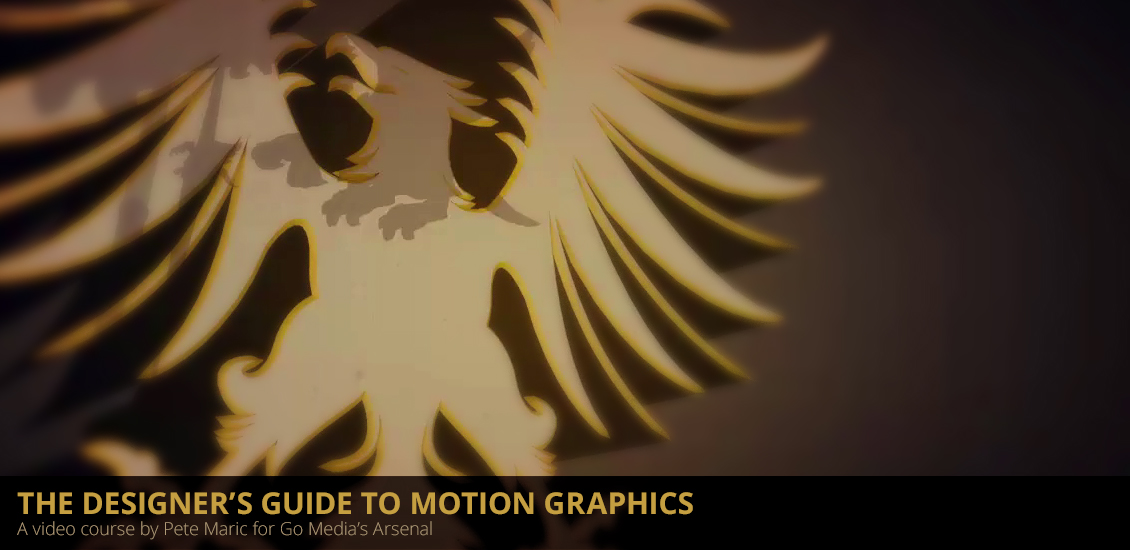Blog

Introducing the Graphic Designer’s Guide to Motion Graphics
And now, for something completely different
If I recap the latest Arsenal releases, we have things ranging from mockup templates, vector packs, to texture sets. Which is, don’t get me wrong, great. Today, I have a different product to put in your eager hands. Behold, the Graphic Designer’s Guide to Motion Graphics (A video course by Pete Maric).
Why this video class?
We have a great number of video tutorials already on the Arsenal. They cover Photoshop and Illustrator quite in depth, either through the vintage art approach from Jeff’s Beauty is a black hole Wacom illustration tutorial, or through the clean and detailed approach from Bill’s 100 series about vector illustration. One of the types of work we’ve only scratched the surface of so far is 3d modeling and motion graphics.
Well, the wait is over. We’ve enlisted an amazing contributor in Pete Maric (the brain behind Triplet 3d) to create a tutorial that would start from some of the Arsenal vectors most of you are already familiar with, and shows you how to create this kind of end result:
Exciting, right? In case the video isn’t loading, head straight to Vimeo.
Let’s have a look at what Pete is covering
- Planning your work with story boards
- Setting up vector artwork for import into Cinema 4D
- Creating 3D geometry based on vector paths
- Materials and setting selections
- Animation techniques using manual keyframing, MoGraph cloners, and splines
- Adjusting animation parameters using Cinema 4D’s timeline
- Three-point light set-up
- Render settings
- Post-production techniques in After Effects
- Sound Design using Garage Band (obviously Mac only, sorry Windows users – but there are Windows alternatives)
You can also read the full table of contents. It basically gives you the keys to understand the basics of 3d modeling and of motion graphics to animate simple elements, using various techniques. The demo video is obviously a combination of everything that’s covered, but you can do simpler, shorter, longer, more complex, etc.






 There’s more!
There’s more!
In order to help the people (like me) that are a bit scared by the Cinema 4D interface, he did a “Cinema 4D 101” kind of series on his blog. It’s pretty great, and well detailed. There are eight posts in the series so far. I now officially don’t have any more excuses to not learn it. And neither do you!
Where can you get it?
On the Arsenal, of course!
